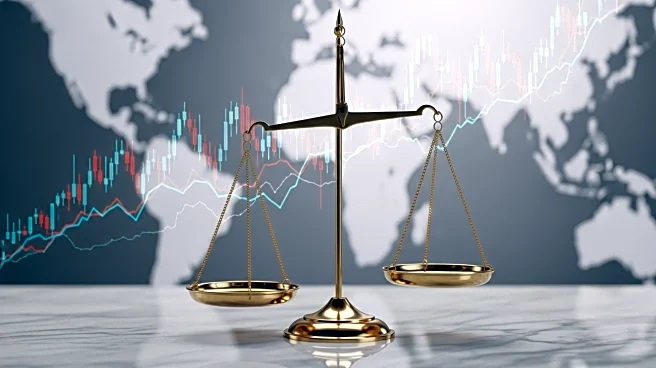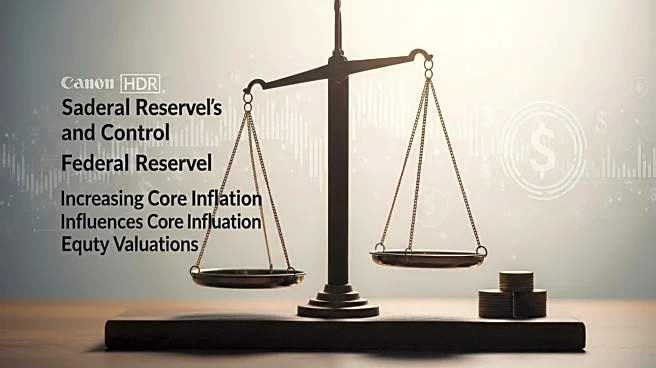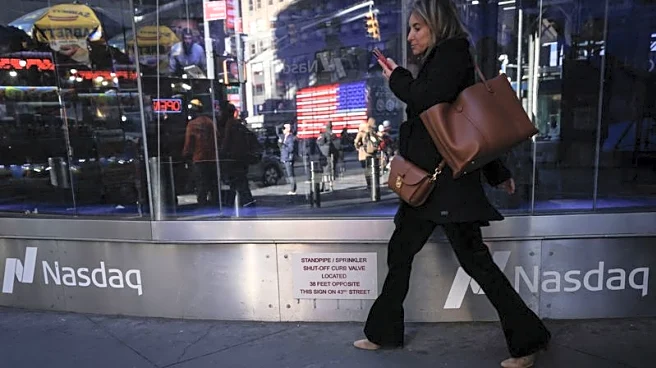What's Happening?
The global economic landscape is experiencing a divergence, with European markets showing resilience while the U.S. faces significant economic pressures. European equities have surged, driven by factors such as a UK-Norway defense deal and a positive study on Novo Nordisk's drug, Wegovy. The European Central Bank's accommodative monetary policy, including rate cuts, has further bolstered market confidence. In contrast, the U.S. is grappling with a slowing labor market and inflationary pressures. The Federal Reserve is at a crossroads, with mixed signals from its governors regarding interest rate cuts. Recent data shows a weak job market, with only 73,000 jobs added in July, and a steady unemployment rate of 4.2%. The Fed's upcoming decision on interest rates is crucial, as market expectations lean towards a potential rate cut.
Why It's Important?
The current economic divergence has significant implications for global investors and policymakers. European markets are benefiting from strategic sectoral gains and supportive monetary policies, creating opportunities for growth in defense and pharmaceuticals. Meanwhile, the U.S. faces challenges that could impact economic stability, including potential inflationary pressures and a sluggish labor market. The Federal Reserve's decision on interest rates will be pivotal in shaping the U.S. economic outlook. A rate cut could stimulate growth but also risk unanchoring inflation expectations. Investors must navigate these complexities by balancing regional exposures and sectoral strategies, with a focus on sectors less affected by rate volatility.
What's Next?
The upcoming week is critical for both U.S. and European markets. Key economic indicators, such as U.S. nonfarm payrolls and European GDP figures, will provide further insights into the economic trajectory. The Federal Reserve's September meeting will be closely watched, as it will determine the direction of U.S. monetary policy. Investors will need to adjust their strategies based on these developments, potentially shifting focus to sectors that offer stability amid rate fluctuations. The outcome of these events will influence whether the current economic divergence is a temporary adjustment or indicative of a longer-term trend.












